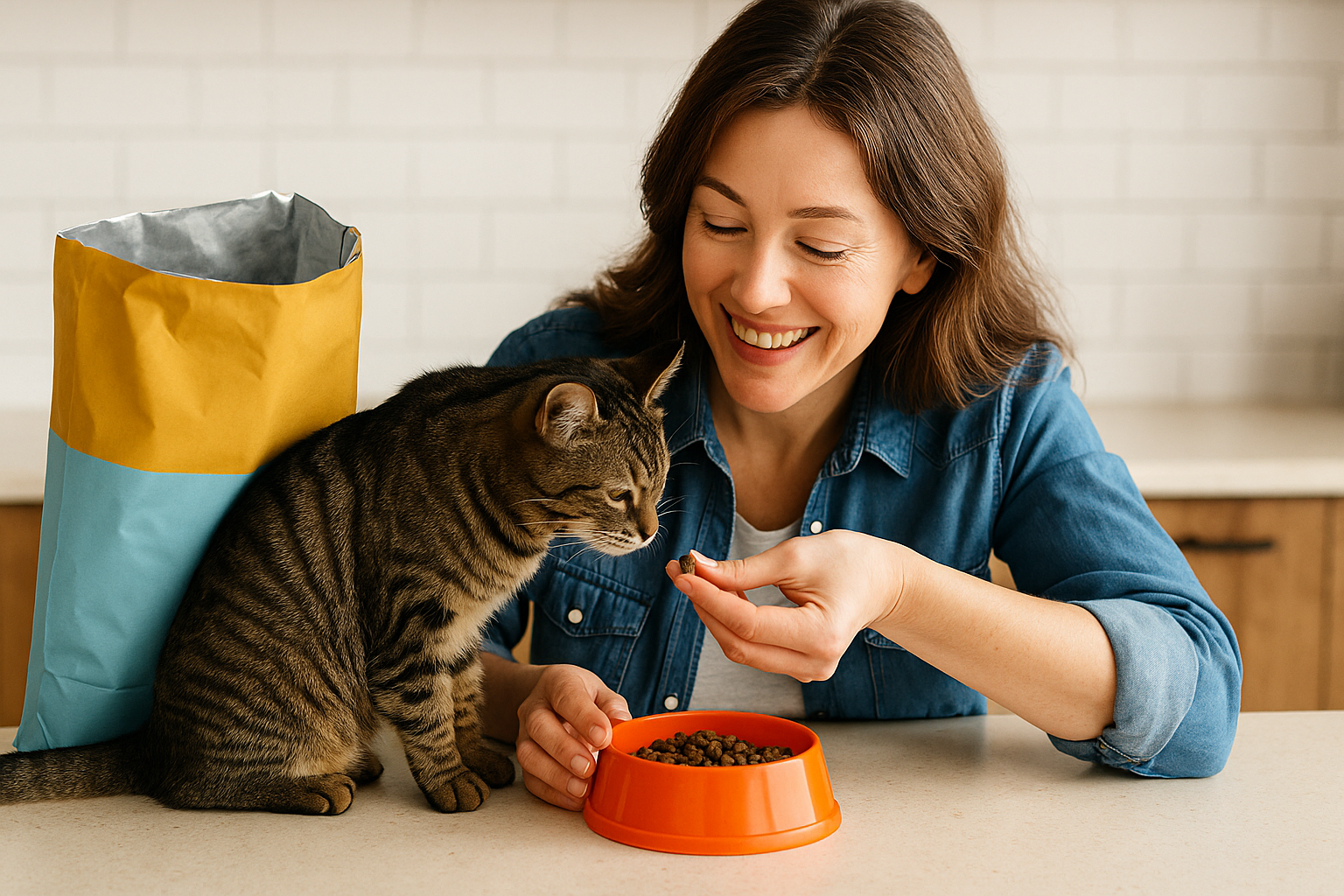Understanding Your Cat's Nutritional Needs
Here's the fundamental truth: cats are obligate carnivores. Unlike dogs, cats have evolved to get their nutrients exclusively from animal tissue.
Taurine
Essential amino acid found only in animal tissue. Deficiency causes blindness and heart disease.
Arachidonic Acid
Fatty acid that cats cannot produce from plant sources. Critical for skin and coat health.
Vitamin A
Cats can't convert beta-carotene to vitamin A. Must come from animal sources.
Niacin
Cats need preformed niacin from meat for efficient utilization.
Decoding Cat Food Labels
Food labels are designed to sell products, not necessarily to educate you.
The Ingredient List
Look for these good signs in the first five ingredients:
- Named meat sources (chicken, turkey, salmon, not just "meat")
- Meat meals (chicken meal, fish meal: concentrated proteins)
- Organ meats (liver, heart: nutrient-dense)
Red flags to watch for:
- Generic terms like "meat by-products" or "animal digest"
- Corn, wheat, or soy as primary ingredients
- Excessive carbohydrates and sugars
Wet Food vs. Dry Food
| Aspect | Wet Food | Dry Food |
|---|---|---|
| Moisture Content | 70-80% water (helps hydration) | 10% water (cats need to drink more) |
| Protein Concentration | Higher protein per calorie | Often diluted with carbs |
| Convenience | Must be refrigerated | Easy to store and portion |
| Cost | More expensive per calorie | More economical |
My recommendation? A combination of both. Wet food provides hydration and better protein ratios, while dry food offers convenience.
Special Diet Considerations
Kittens
Growing cats need significantly more calories and protein. Feed kitten food until at least one year of age.
Senior Cats
Older cats often need more easily digestible proteins. However, don't automatically switch at seven years if your cat is healthy.
Medical Conditions
Some conditions absolutely require prescription diets:
- Chronic kidney disease
- Urinary crystals/stones
- Food allergies
- Diabetes
- Digestive issues
Grain-Free: Necessary or Marketing Hype?
🚫 Myth: Cats are allergic to grains
Reality: True grain allergies are extremely rare in cats. Studies show less than 1% of cat allergies involve grains.
Focus on total carbohydrate content and protein quality rather than whether those carbs come from grains or legumes.
Raw Diets: Risks and Benefits
Potential Benefits:
- High moisture content
- Minimal processing
- No carbohydrate fillers
Significant Risks:
- Bacterial contamination
- Nutritional imbalances
- Bone fragments
- Parasite transmission
If interested in raw feeding, work with a veterinary nutritionist to formulate a complete and balanced diet.
Reading Between the Marketing Lines
"Complete and Balanced"
This matters! It means the food meets AAFCO standards for nutritional adequacy. Always look for this on the label.
Find AAFCO Complete Cat Foods →Transitioning Foods Safely
Never switch foods abruptly. Here's the right way:
- Days 1-2: Mix 25% new food with 75% old food
- Days 3-4: Mix 50% new food with 50% old food
- Days 5-6: Mix 75% new food with 25% old food
- Day 7+: Feed 100% new food
Portion Control and Feeding Schedule
General guidelines for adult cats:
- 2-3 meals per day for optimal metabolism
- Follow package guidelines, then adjust based on body condition
- Monitor weight monthly
- Treats should be less than 10% of daily calories
The Bottom Line on Cat Nutrition
Choosing the right cat food isn't about finding the most expensive option or following trends. It's about understanding your individual cat's needs.
Start with these non-negotiables: high-quality animal protein as the primary ingredient, appropriate moisture content, and AAFCO certification for complete and balanced nutrition.
Remember, the best food in the world is useless if your cat won't eat it. A cat eating a good-quality food consistently is better off than one refusing the "perfect" food.
